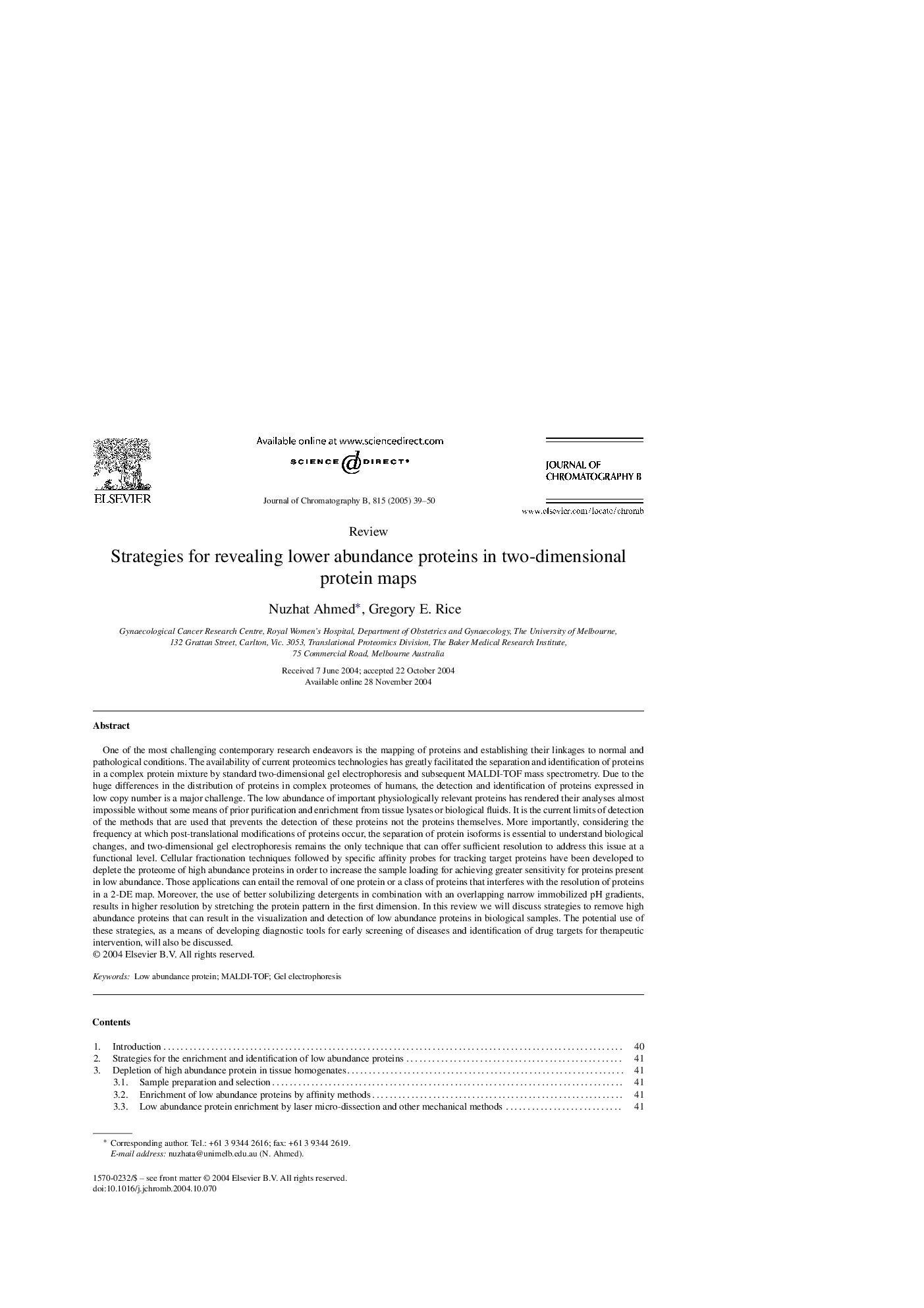| Article ID | Journal | Published Year | Pages | File Type |
|---|---|---|---|---|
| 9753392 | Journal of Chromatography B | 2005 | 12 Pages |
Abstract
One of the most challenging contemporary research endeavors is the mapping of proteins and establishing their linkages to normal and pathological conditions. The availability of current proteomics technologies has greatly facilitated the separation and identification of proteins in a complex protein mixture by standard two-dimensional gel electrophoresis and subsequent MALDI-TOF mass spectrometry. Due to the huge differences in the distribution of proteins in complex proteomes of humans, the detection and identification of proteins expressed in low copy number is a major challenge. The low abundance of important physiologically relevant proteins has rendered their analyses almost impossible without some means of prior purification and enrichment from tissue lysates or biological fluids. It is the current limits of detection of the methods that are used that prevents the detection of these proteins not the proteins themselves. More importantly, considering the frequency at which post-translational modifications of proteins occur, the separation of protein isoforms is essential to understand biological changes, and two-dimensional gel electrophoresis remains the only technique that can offer sufficient resolution to address this issue at a functional level. Cellular fractionation techniques followed by specific affinity probes for tracking target proteins have been developed to deplete the proteome of high abundance proteins in order to increase the sample loading for achieving greater sensitivity for proteins present in low abundance. Those applications can entail the removal of one protein or a class of proteins that interferes with the resolution of proteins in a 2-DE map. Moreover, the use of better solubilizing detergents in combination with an overlapping narrow immobilized pH gradients, results in higher resolution by stretching the protein pattern in the first dimension. In this review we will discuss strategies to remove high abundance proteins that can result in the visualization and detection of low abundance proteins in biological samples. The potential use of these strategies, as a means of developing diagnostic tools for early screening of diseases and identification of drug targets for therapeutic intervention, will also be discussed.
Keywords
Related Topics
Physical Sciences and Engineering
Chemistry
Analytical Chemistry
Authors
Nuzhat Ahmed, Gregory E. Rice,
